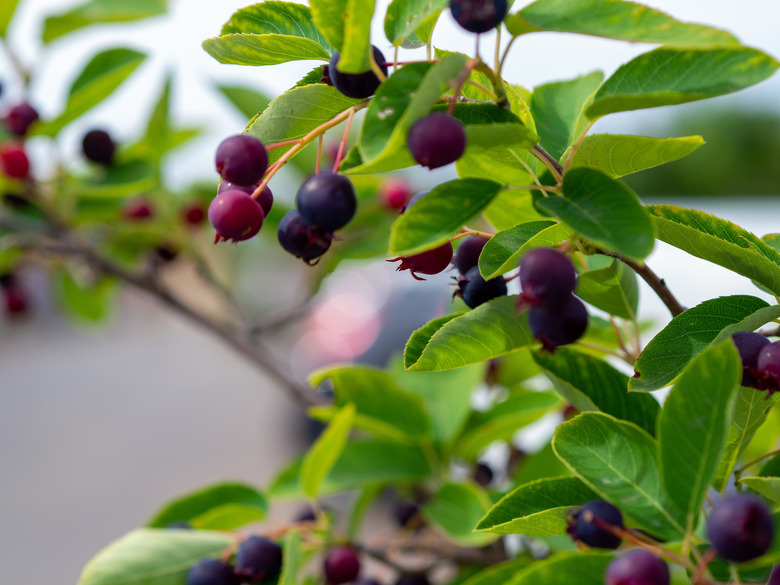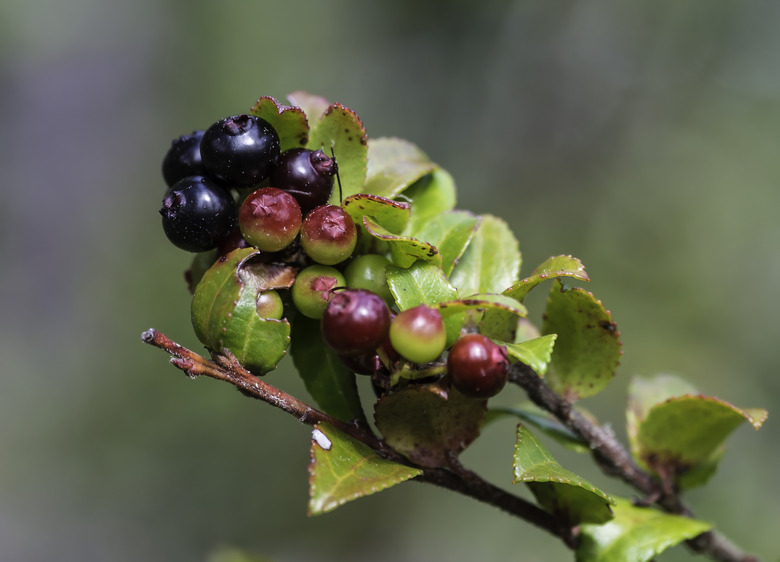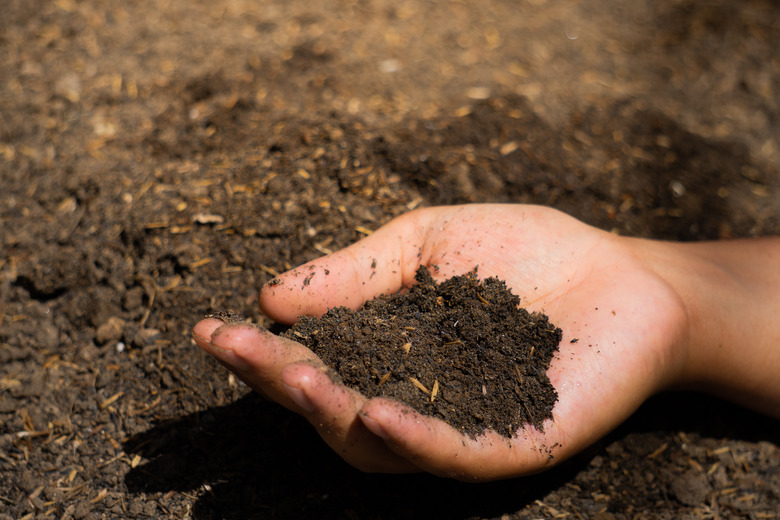How To Plant & Care For Huckleberry Bushes
The common name "huckleberry" is used for several species of fruiting shrub within the genuses Vaccinium and Gaylusscia. Most huckleberry varieties grow best within U.S. Department of Agriculture plant hardiness zones 3 to 7, although hardiness can vary between types, with the evergreen huckleberry (Vaccinium ovatum) growing best in zones 7 to 9 and the dwarf huckleberry (Gaylusscia dumosa) preferring zones 5 to 9.
Huckleberries are picky about their surroundings and will not perform well if planted under challenging conditions. However, by choosing the best possible growing site and providing the right care, you can improve your chances of growing a crop of their fragrant, flavorful fruit at home.
Understanding Huckleberries and Blueberries
Huckleberries share many traits in common with blueberries, because they both belong to the same genus, Vaccinium. Their growing conditions and care needs are the same, but there are differences between the two fruit varieties as well.
Huckleberries
* Huckleberries produce single fruit.
- Huckleberries are purple or red inside.
- Huckleberries contain hard, bitter-tasting seeds inside.
Blueberries
* Blueberries produce clusters of fruit.
- Blueberries are pale green or white inside.
- Blueberries have tiny, soft seeds inside.
Preparing to Plant Huckleberry Bushes
Huckleberries are notoriously difficult to grow because they resent being transplanted and are very picky about their growing conditions. A growing site with moist, fast-draining soil with a pH between 4.5 and 5.5 is best for these acid-loving shrubs, and they will not bear fruit if planted in wet, alkaline soil.
Huckleberries need six hours of sunlight each day in early summer, although they will set fruit with as little as four hours of direct sunlight each day in warmer climates.
Spring and late autumn are the best times for planting huckleberry bushes, although spring is best for colder climates, and autumn is best for climates with a long, hot summer. Plant 1- to 3-year-old shrubs that will produce fruit faster than newly rooted saplings. Huckleberries are self-fertile, but the shrubs will produce more and larger fruit when planted in close proximity to other huckleberries with which they can cross-pollinate.
Tip
Plant multiple huckleberry bushes within 50 feet of each other to provide effective cross-pollination.
Planting Huckleberry Bushes
Careful soil preparation makes a difference when planting huckleberries. Prepare the planting site at least two weeks before planting huckleberry shrubs so that the soil has time to settle before planting.
- Till the soil at the planting site and remove any sticks, stones or other pieces of hard debris from the soil.
- Amend the entire bed with a 1- to 2-inch-thick layer of acidic organic matter, such as shredded pine bark or acidic compost.
- Work the compost into the top 8 inches of soil so that the entire bed is enriched.
- Water well after preparing the soil, which will settle the soil and collapse any air pockets.
Huckleberries are shallow-rooted shrubs that must be planted slightly high in the soil to keep the roots from drowning, so careful attention is needed during the planting process.
- Dig a hole that is twice as wide and twice as deep as the nursery pot. Fill in the bottom half of the hole with a mix of loose soil and compost.
- Remove the huckleberry from its pot and settle it into the hole with its roots spread out. Be sure the top of the root ball is no more than 1/4 to 1/2 inch below the surface of the soil.
- Fill in around the roots and tamp the soil gently to anchor the shrub in place. Water deeply to settle the soil.
Caring for Huckleberry Bushes
Water and fertilizer will both help huckleberry bushes grow well, but they must be applied at the right time and in the right amount to have the greatest effect.
**Water and Mulch:** Water in particular is necessary for huckleberries to establish a healthy root system, so it is a good idea to spread a 2- to 4-inch-thick layer of pine bark or pine needle mulch over the planting area to hold moisture in the soil. Keep the mulch layer a couple of inches away from the base of the shrub. Provide 1 to 2 inches of water each week whenever the soil feels dry in the top couple of inches.
**Fertilizer:** Fertilizer applied too soon after planting can hurt the roots of a young huckleberry plant. Wait a year before feeding your huckleberries, and feed them in spring using 10-10-10 fertilizer. Apply 1 ounce of fertilizer in a circle around the base of each bush, taking care not to get the fertilizer onto the foliage. Increase the amount of fertilizer by 1 ounce each year until the shrub reaches its full size.
Tip
Use an acid-based fertilizer when feeding huckleberries.
Harvesting Huckleberries
Most huckleberry varieties are ready for harvest in mid- to late summer although it varies between species. Red huckleberries (Vaccinium parvifolium), which grow in USDA hardiness zones 4 to 9, are ripe earlier in the summer and evergreen huckleberries are not ready for harvest until after the first frost in autumn.
The fruit is ready for harvest when it takes on a uniform color. Red huckleberries turn bright red when ready for harvest and evergreen huckleberries are not ready for harvest until they are purplish-black. Ripe huckleberries are very delicate and must be harvested carefully by hand.
Tip
Washing huckleberries will reduce their shelf life–unwashed, they will store in the refrigerator for up to two weeks or they can be stored in the freezer for months.


